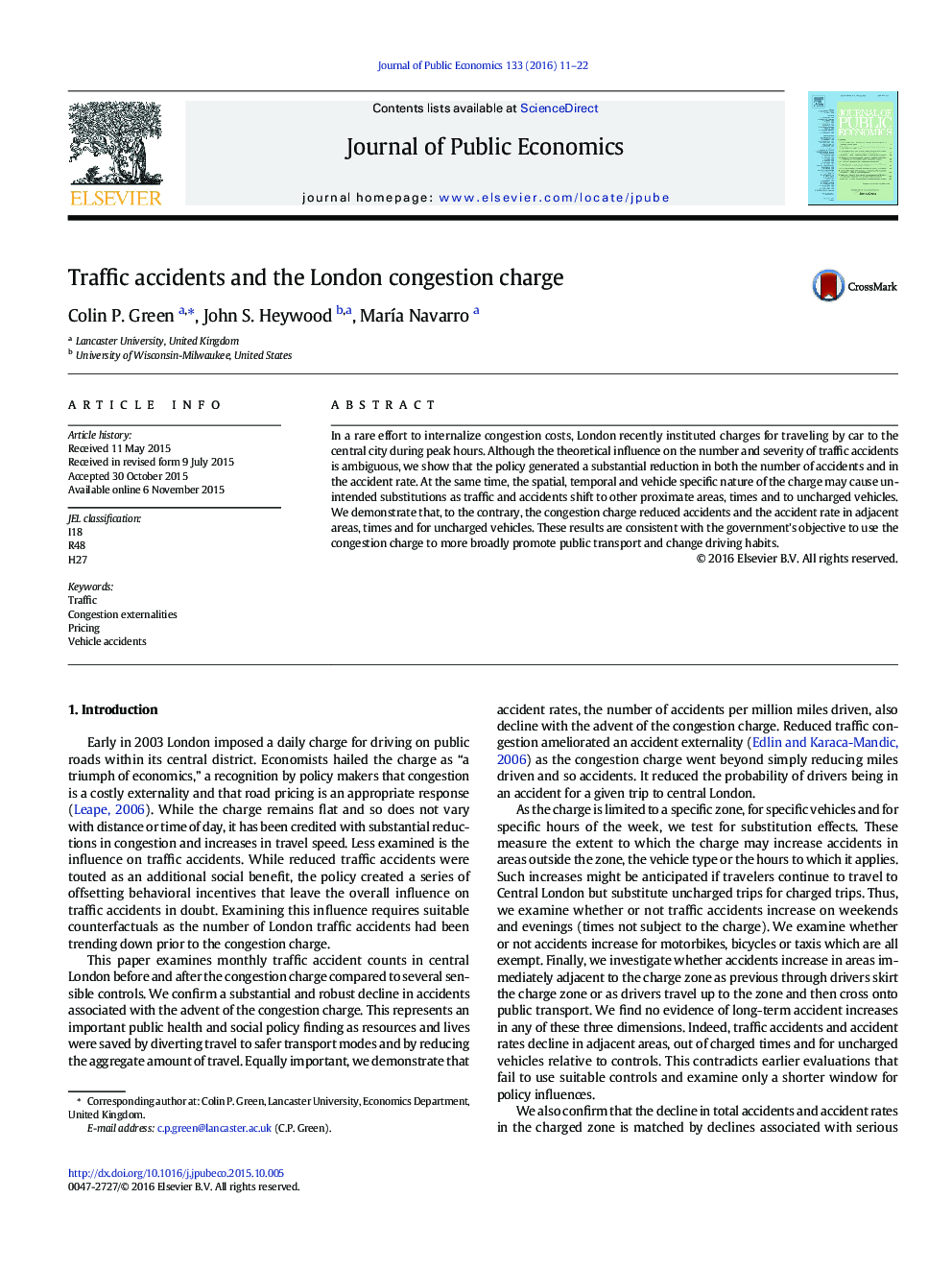| Article ID | Journal | Published Year | Pages | File Type |
|---|---|---|---|---|
| 7369762 | Journal of Public Economics | 2016 | 12 Pages |
Abstract
In a rare effort to internalize congestion costs, London recently instituted charges for traveling by car to the central city during peak hours. Although the theoretical influence on the number and severity of traffic accidents is ambiguous, we show that the policy generated a substantial reduction in both the number of accidents and in the accident rate. At the same time, the spatial, temporal and vehicle specific nature of the charge may cause unintended substitutions as traffic and accidents shift to other proximate areas, times and to uncharged vehicles. We demonstrate that, to the contrary, the congestion charge reduced accidents and the accident rate in adjacent areas, times and for uncharged vehicles. These results are consistent with the government's objective to use the congestion charge to more broadly promote public transport and change driving habits.
Related Topics
Social Sciences and Humanities
Economics, Econometrics and Finance
Economics and Econometrics
Authors
Colin P. Green, John S. Heywood, MarÃa Navarro,
